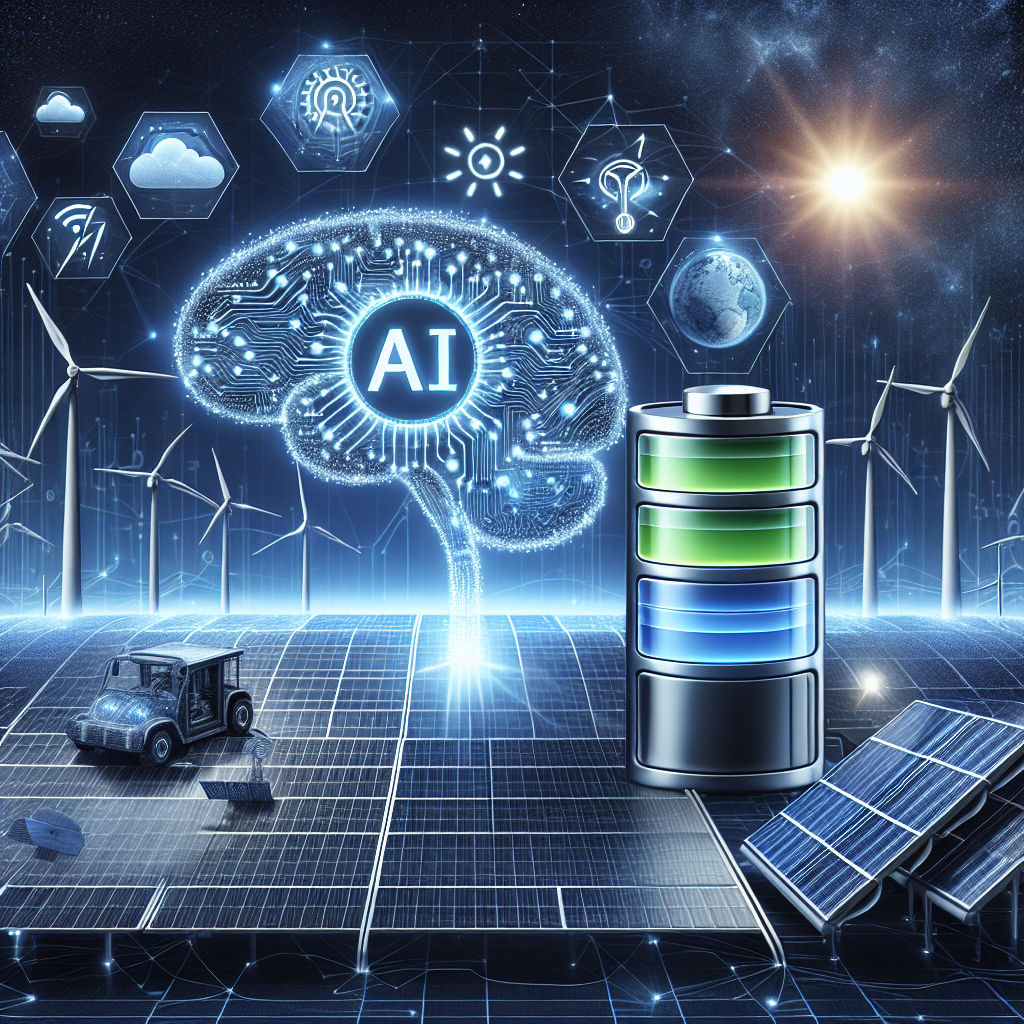As the world continues to shift towards renewable energy sources such as solar and wind power, one of the biggest challenges facing the industry is how to effectively store and distribute this energy. The intermittent nature of these sources means that energy generated during peak times may not always align with when it is needed most. This is where artificial intelligence (AI) comes in, offering solutions to improve renewable energy storage and maximize its efficiency.
AI technologies can play a crucial role in optimizing energy storage systems, helping to balance supply and demand, predict energy production, and reduce costs. By using AI algorithms to analyze data and make real-time decisions, renewable energy storage systems can become more intelligent and efficient. Here are some ways in which AI can improve renewable energy storage:
1. Predictive maintenance: AI can be used to predict when energy storage systems may require maintenance or repairs, helping to prevent downtime and ensure optimal performance. By analyzing data from sensors and monitoring equipment, AI algorithms can detect potential issues early on and alert operators before they become critical.
2. Energy forecasting: AI can help predict energy production from renewable sources such as solar and wind power, allowing for better planning and management of energy storage systems. By analyzing historical data, weather patterns, and other variables, AI algorithms can provide accurate forecasts of energy generation, helping operators to optimize storage capacity and reduce waste.
3. Grid optimization: AI can help optimize the distribution of energy within the grid, ensuring that renewable energy is used efficiently and effectively. By analyzing real-time data on energy demand, supply, and pricing, AI algorithms can help balance the grid and reduce the need for fossil fuel-powered backup generators.
4. Energy trading: AI can facilitate energy trading between different parties, allowing for the buying and selling of excess energy generated from renewable sources. By using AI algorithms to match supply and demand in real-time, energy trading platforms can help maximize the value of renewable energy storage systems and reduce costs for consumers.
5. Demand response: AI can help manage energy demand by incentivizing consumers to shift their energy usage to off-peak hours when renewable energy production is high. By using AI algorithms to analyze consumer behavior and offer incentives such as time-of-use pricing, energy providers can reduce peak demand and optimize energy storage systems.
Overall, AI technologies have the potential to revolutionize renewable energy storage and help accelerate the transition to a more sustainable energy system. By leveraging the power of AI to optimize energy storage systems, operators can improve efficiency, reduce costs, and maximize the value of renewable energy sources.
FAQs:
Q: How does AI improve renewable energy storage systems?
A: AI technologies can optimize energy storage systems by predicting maintenance needs, forecasting energy production, optimizing grid distribution, facilitating energy trading, and managing demand response.
Q: What are the benefits of using AI in renewable energy storage?
A: The benefits of using AI in renewable energy storage include improved efficiency, reduced costs, better grid optimization, increased reliability, and enhanced sustainability.
Q: How can AI help predict energy production from renewable sources?
A: AI algorithms can analyze historical data, weather patterns, and other variables to provide accurate forecasts of energy generation from sources such as solar and wind power.
Q: How does AI facilitate energy trading in renewable energy systems?
A: AI algorithms can match supply and demand in real-time, allowing for the buying and selling of excess energy generated from renewable sources between different parties.
Q: How can AI help manage energy demand in renewable energy systems?
A: AI technologies can incentivize consumers to shift their energy usage to off-peak hours when renewable energy production is high, reducing peak demand and optimizing energy storage systems.

